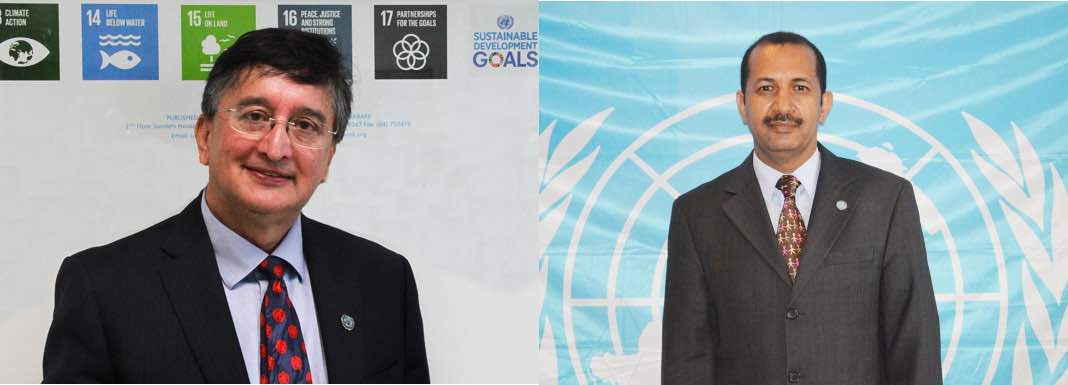By Bishow Parajuli and Dr. Mohamed Ag Ayoya
Malnutrition continues to be a challenge for many countries around the world. Globally, one in three people is malnourished in one form or another and about 815 million people, or one in ten, are suffering from chronic undernourishment.
The various consequences of malnutrition are literally devastating. An estimated 45 percent of deaths among children under age 5 are attributable to malnutrition. Malnutrition and inadequate diet are now the largest risk factors responsible for the global burden of diseases—by far.
The economic consequences represent losses of gross domestic product (GDP), year in and year out, of 10 percent—far greater than the annual percentage loss in world GDP due to the global financial crisis of 2008–2010.
The costs of inaction are therefore unbearable; the stakes are high and so are the returns. The time to act is now because not doing so is complacency.
Childhood stunting is one of the most significant impediments to human development, globally affecting 151 million children under the age of 5 years per a recent UNICEF, World Bank and WHO report. According to this report, stunting is the devastating result of poor nutrition in-utero and early childhood. Children suffering from stunting may never attain their full possible height and their brains may never develop to their full cognitive potential. Stunted children begin their lives at a marked disadvantage: they face learning difficulties in school, earn less as adults, and face barriers to participation in their communities.
In Zimbabwe, the prevalence of stunting in children less than five years of age is at 26 per cent in 2018 which points to an improvement from 34 per cent 8 years ago. However, this progress is blunted by marked disparities among rural and urban areas and among rich and poor households. It remains, nonetheless, encouraging to note that Zimbabwe is one of the 60 countries that are leading a global movement to end malnutrition in all its forms by 2025.
According to the Scale Up Nutrition latest report published at the end of 2017, Zimbabwe’s progress towards scaling-up nutrition stands at 70%. This includes: Bringing people together (86%), Coherent policy and legal framework (66%), Aligning programs around a Common Results Framework (75%), Financial tracking and resource mobilization (52%). This clearly shows that there is still much to be done.
The 2030 Agenda for Sustainable Development and its 17 goals represent an unprecedented set of opportunities to make stronger commitments to nutrition. The ambition to ‘End hunger, achieve food security and improved nutrition and promote sustainable agriculture’ is captured in SDG 2. In addition, at least 12 of the 17 Goals contain indicators that are highly relevant to nutrition. The SDGs commit all governments including Zimbabwe to comprehensive, integrated and universal transformations, including ending hunger and malnutrition by 2030.
In line with the SDGs, through the 2016 – 2020 Zimbabwe UN Development Assistance Framework, the United Nations support to Zimbabwe in the area of nutrition includes: promotion of appropriate infant and young child feeding practices; distribution of micronutrients (including multiple micronutrient powders); promotion of food fortification; and treatment of acute malnutrition (moderate and severe). Other critical interventions include: resilience building, targeted food assistance, social cash transfers to vulnerable households, improved water, sanitation and hygiene practices; school meals; introduction of small grains and fortification of maize and nutrition education.
The national Food and Nutrition Council and UNICEF convened over 300 hundred stakeholders in the nutrition sector on 29 May 2018 in Harare to review the multi-sectoral community based model adopted to achieve food and nutrition security by reducing stunting in Zimbabwe.
Going forward, the United Nations will continue to support national efforts in the following ten inter-linked areas to enhance the nutrition status in Zimbabwe:
• National efforts to find plausible ways on how to make food systems work harder and better for nutrition while enhancing sustainability.
• The health system through which most of the high-impact nutrition interventions that address malnutrition are delivered.
• National policies and guidelines on adolescents’ health and nutrition.
• The scaling up of the multi-sectoral community-based model for addressing food and nutrition insecurity.
• Girls education to avoid child marriages and delay the age at which they first give birth, to reset norms about healthful diets and good nutrition, feeding and hygiene practices and improve their social and economic status later in life.
• Improved availability and access to clean water and sanitation facilities.
• Gender equality, women’s empowerment and access to viable opportunities and resources.
• Resource mobilization for successful and sustained implementation of nutrition programmes – with a particular emphasis on advocating for increasing domestic resource allocations for nutrition sensitive as well as nutrition specific interventions.
• Capacity building of multisectoral food and nutrition security committees at all levels for food diversity and complementary feeding; and
• Real time monitoring system and data for evidence-based decision making and progress tracking.
Investing in ending malnutrition is one of the most cost-effective steps Zimbabwe can take. According to the Global Nutrition Report published in 2016, for every USD 1 invested in proven nutrition programmes offers benefits worth USD 16.
Together we can take the right actions now towards scaling up national nutrition interventions in Zimbabwe. Let’s not miss the opportunity.
*Mr. Bishow Parajuli is UN Resident Coordinator in Zimbabwe and Dr. Mohamed Ag Ayoya is UNICEF Representative in Zimbabwe.






